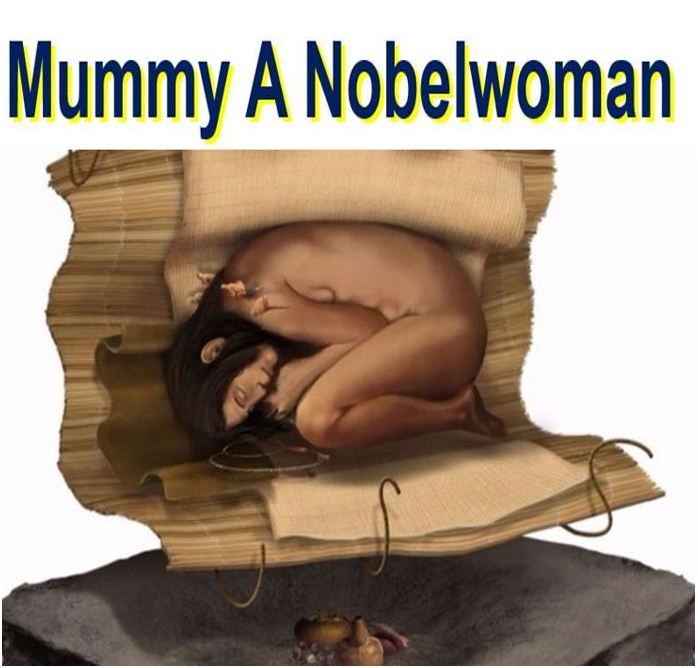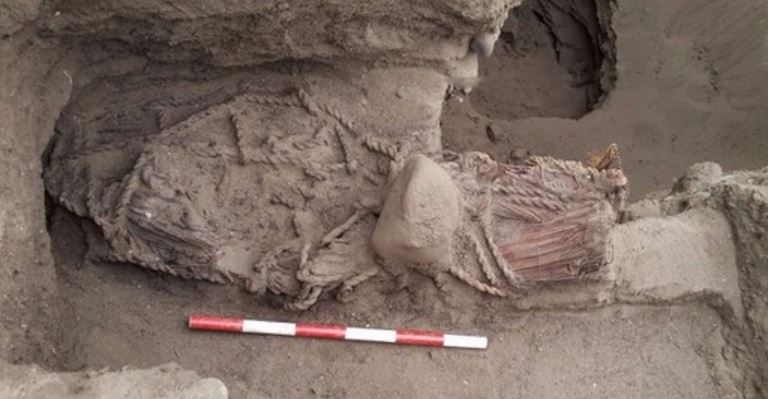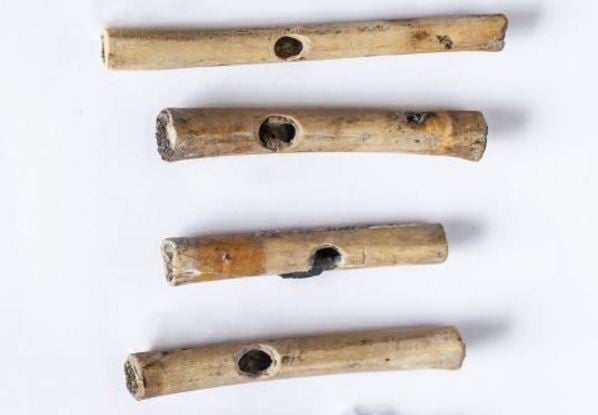A 4500 year old Peruvian mummy has been discovered by archaeologists, who said that the woman who had been buried near one of the Americas’ most ancient cities sheds light on Peru’s ancient history.
Dr. Ruth Martha Shady Solís, a renouned Peruvian anthropologist and archaeologist, founder and director of the Caral archaeological project, believes the woman was most likely a member of the nobility who died at the age of 40 to 50.
The woman was buried in the coastal ruins of Aspero, about fourteen miles from Caral (Caral-Supe), a large settlement in the Supe Valley about 200 km north of Lima. Caral is believed to be the most ancient city in the Americas.
 Because of the position of the body in the burial ground, the valuable artefacts she was wearing, as well as some objects placed next to her, archaeologists believe the 4,500-year-old mummified body was of a noblewoman. (Image: e.rpp-noticias.io)
Because of the position of the body in the burial ground, the valuable artefacts she was wearing, as well as some objects placed next to her, archaeologists believe the 4,500-year-old mummified body was of a noblewoman. (Image: e.rpp-noticias.io)
Next to the mummy in the burial site, the archaeologists unearthed several carved objects of birds and monkeys, which Dr. Shady Solís says probably means that the coastal town of Caral traded with a larger city inland.
The archaeological team concluded that the woman was of high socioeconomic status because of the value of many of the artefacts that had been buried next to her – carved desert birds, designs of monkeys (from the jungle), and seashells – which came from very different environments.
Dr. Shady Solís and colleagues dated the mummy to approximately 2,500 BC (4,500 years ago), which coincided with the period we believe that the people in the region started constructing pyramids.
Andina, a Peruvian new agency, quoted Dr. Shady Solís as saying:
“In the settlements of the Caral civilization, sacrifice of human beings was not regular. They were very rare.”
 According to Peruvian newspaper RPP Noticias: “This was how the mummy was found.” (“Así fue hallada la momia.”). (Image: rpp.pe/peru/historia)
According to Peruvian newspaper RPP Noticias: “This was how the mummy was found.” (“Así fue hallada la momia.”). (Image: rpp.pe/peru/historia)
Regarding their findings, Dr. Shady Solís said:
“[There appeared to be] gender equality, a type that allowed both women and men to hold leadership roles and achieve a high social status more than 1,000 years ago.”
“Where they placed her and the way she was buried points to a the high social status that this woman achieved 4,500 years ago.”
The presumed noblewoman was discovered wearing a a Spondylus pendant, a necklace of seashells, and four bone broaches (tupus) carved with designs of moneys and birds.
Dr. Shady Solís said that music played a major role in the everyday and religious life of Aspero, according to a recent discovery of eight flutes made from animal bones which had been placed as offerings in the nearby Puerto Supe district.
 Eight flutes made of animal bones were found nearby. Archaeologists believe they were offerings. (Image: portal.andina.com.pe)
Eight flutes made of animal bones were found nearby. Archaeologists believe they were offerings. (Image: portal.andina.com.pe)
Evidence points to trade and other cultural interactions between the people of Aspero and other communities within the Caral civilization, which extended up into the mountains, the Peruvian jungle, the Supe Valle and the coast.
According to anthropologists, Caral was inhabited between 2600 BC and 2000 BC, covering an area exceeding 60 hectares (148 acres).
Archaeologists say Caral was the oldest urban center in the American continent (including North/South America). This claim has often been challenged by experts, who point to other nearby sites, such as Bandurria, also in Peru.
Video – 4,500 year old mummy unearthed in Peru
Archaeologists have unearthed an ancient, 4,500-year-old mummy of a noblewoman in Peru.

